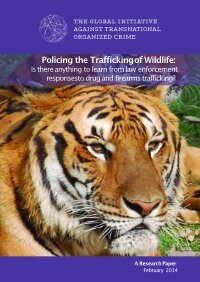Policing the Trafficking of Wildlife: Is there anything to learn from law enforcement responses to drug and firearms trafficking?
By John M. Sellar
The “tipping point” on wildlife crime is fast approaching: the extinction of key species and irreparable damage to the environment are both imminent possibilities in the near future. Growing demand for wildlife products in key markets has triggered a professionalization and aggression in poaching which is unparalleled. Armed with advanced weaponry, surveillance equipment and facilitated by extensive corruption, the criminal market in wildlife crime is now one of the most significant illicit markets in the world. Key species such as the rhino are being slaughtered at record levels. Lesser known animals are traded at a scale that is almost incomprehensible. This is no longer just a criminal act: it is warfare. The law enforcement community, at national and international levels, has long been engaged in what are described as ‘wars’ against narcotic and firearm trafficking. These two forms of criminality share many of the same features as those of wildlife trafficking, particularly as all three involve: the harvesting or acquisition of material or products in one State; usually require illicit export from the same State; the subsequent clandestine movement of the material or products across further national borders (regularly many borders and also intercontinentally); illicit import to the State of destination; and final delivery to customers and consumers.
Geneva: Global Initiative against Transnational Organized Crime, 2014. 46p.


